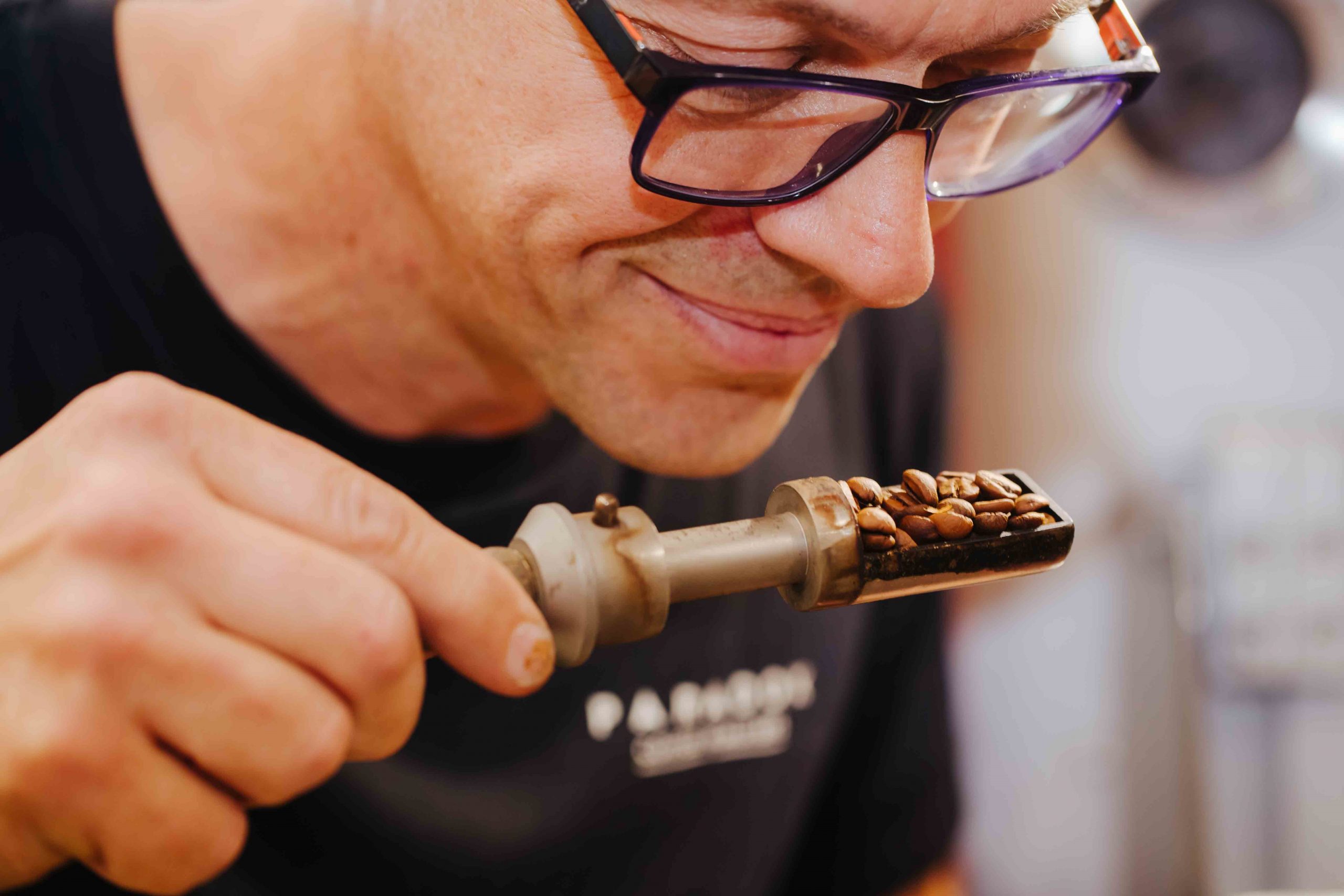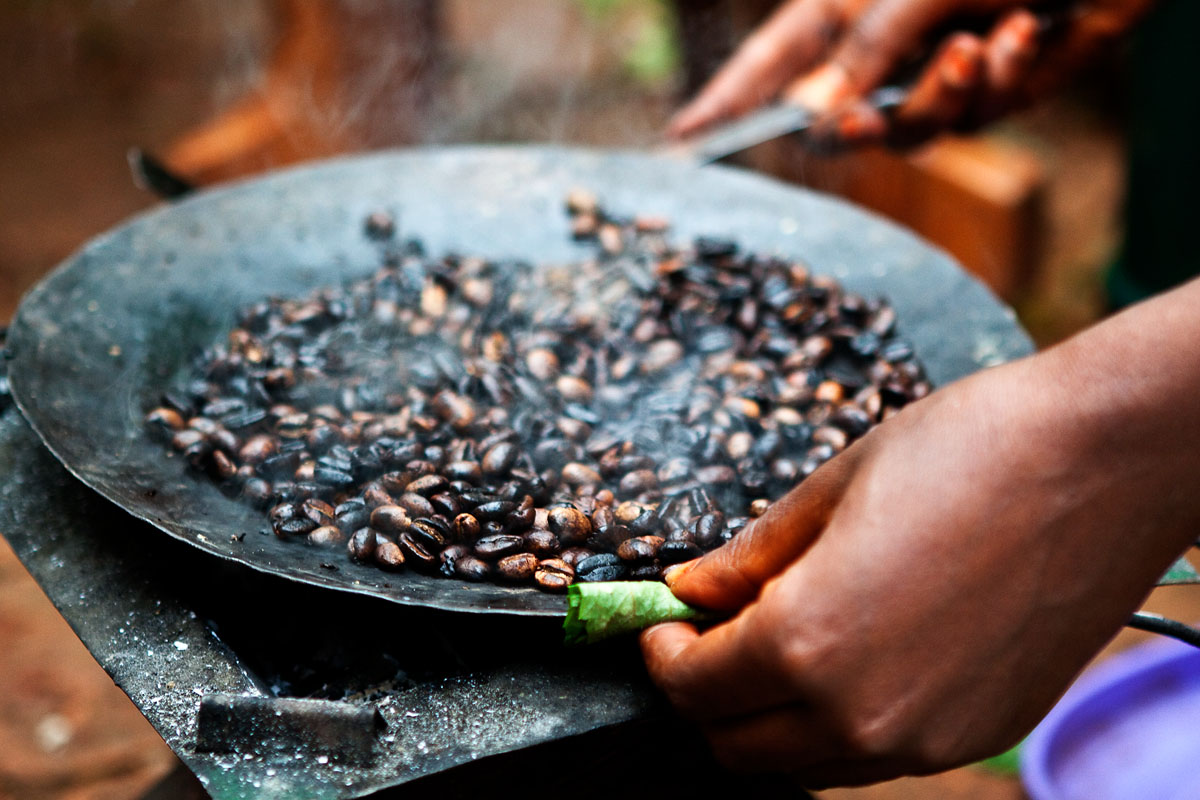Part 1 of a two-part series. In this article, we look at the two ways a roasting system can get heat into the coffee beans, and the merits of each pathway.
by Paul Golding, Paradox Head Roaster

A vital factor in the process of transforming coffee beans to a roasted, drinkable state, is the ability to control the application of heat to the beans. With a controlled application, we can have the roast process follow a “profile” or graphic curve of increasing temperature over time. If we can get the roast to follow the curve to our liking, we should achieve delicious tasting coffee! There are two ways the roasting system can impart heat to the coffee beans: convection and conduction. Each method of transmitting heat has a different effect on the final cup, so roasting systems are designed to proportion these pathways. The design of the roaster will create a “signature” on the texture and flavours of the coffee. This is a very subtle but noticeable factor for which operators need to account when setting up roast profiles.
The whole process of coffee roasting centres on heat energy – creating and transmitting it to the coffee beans in such a way that they cook evenly, transforming from a hard, indigestible green seed to the delightful brown, fragrant bean we love. That transfer of heat is called a roast profile. It is well known in roasting that the shape of the roast profile curve will affect the final flavour of the coffee. Less well understood, but vital knowledge for any roaster, is the effect which comes from the proportioning of the two heat transmission pathways- convection and conduction. This is how the heat enters the beans.
Conduction requires skin contact, meaning, the beans must be touching the hot roasting drum, and absorb heat directly from the metal. This is like cooking in a frying pan, as we know anything left static in a hot frying pan will eventually burn on the contact face. Therefore, the drum rotates; agitating the coffee, as we shake the frying pan, to cook the food more evenly. I used the frying pan metaphor deliberately; this is how coffee is traditionally roasted in Ethiopia, using a steel metat dish over hot coals and relying almost totally on conduction. The beans are agitated with a metal spoon or paddle to achieve a more even roast. A skilled woman (men are usually not permitted to do this) can produce a relatively tasty coffee.

Anyone who has seen this process, however, can bear witness to the fact that even the best roasted beans are typically unevenly cooked, somewhat blackened on the outside compared to the inside. Conductive heating therefore has limitations- the heat is not transferred evenly into the beans. In cooking, heat is transmitted best via the water content of the food. Coffee beans are hard and dense, with a relatively low water content, which means heat takes time to transfer from the outer skin to the core. If relying primarily on conductive heating, by the time the core of the bean begins to roast, the outer skin is already well ahead, and probably starting to burn.
Convective heating transfers heat into the beans via contact with surrounding hot air. Working best in a closed environment, like your domestic oven at home, or in this case, the enclosed roasting drum. The air is hot, but also at a higher pressure than the outside air. The combination of hot, high pressure air forces heat into the beans, very evenly, as the air has total constant contact with the entire surface of every bean. Since the air transmits the heat in a “softer” more gradual and even way than a hot metal surface, there is far less risk of scorching, and the transfer efficiency of the heat/pressure combination means the beans will roast more evenly from inside to out.
So, why not have a roasting system which works 100% by convection if conductive heating is slow and can burn the coffee? Good question; the rotating drum roaster is a very old design, and there are indeed new roasting systems which operate completely by hot air convection. Air roasters use a chamber through which hot air is passed at high speed, which stirs the coffee and enables convective roasting. This process is very fast, but air roasters have never really gained popularity in specialty coffee, partly because they are very expensive, and because coffee roasted in this way always lacks some of the essential character of drum roasted coffee. Empirically, it seems that some conductive heating is desirable to produce the full-bodied coffee flavours we want.
How, then, to incorporate conductive heating in a smaller degree, and utilise convection for the most part of the roast? The answer lies in the drum rotation, and the interior design of the drum, which is one of the black arts of roaster design and construction. Within the drum are metal paddles or fins, which “stir” the coffee as the drum rotates. A portion of the coffee is collected from the base of the drum, drawn up the side, and released into the air, from where it falls back to the bottom. In this way the coffee is spending part of its time in the air (convective) and part of the time on the drum (conductive). The exact shape, placement and angles of the interior fins will determine to what extent this is portioned out. This aspect of the design results in the “signature” flavours from various roasting systems.
In part two, we will look at how modern roaster designs incorporate variable drum speed to dynamically shift the ratio of conductive to convective heating during the roast, and how this function can be used to get the best from coffee, and also to capture the best attributes of both air roasters and older drum roasters in a single machine.